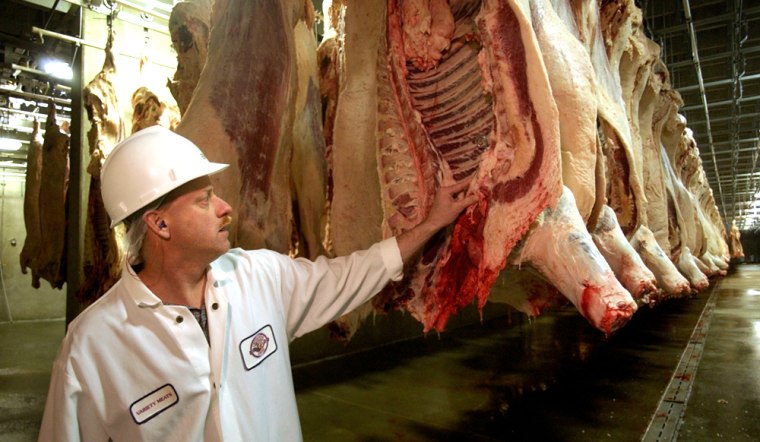Prices for steaks, ribs, and roasts will go up this week at Paulina Market in Chicago as owner Raymond Lekan adjusts for a surprising rise in wholesale beef prices.
Shoppers across the country will soon pay more for their beef now that wholesale prices have skyrocketed to their highest levels since November 2003. That was a month before prices fell 20 percent on news of the first U.S. case of deadly mad cow disease.
Lekan had managed to keep his beef prices fairly stable, but he can't ignore the latest surge.
"We will have to re-price everything -- I would guess at least a 10 to 15 percent rise," he said.
Prices of choice-grade beef, the cuts preferred by cookout enthusiasts and restaurants, have jumped nearly 20 percent since April 1, a rise fueled by tight supplies of the slaughter-ready fat cattle that produce the choicest meats.
But the American consumer's stubborn attachment to eating beef has stayed surprisingly strong in the face of the mad cow disease scare and soaring prices.
Peak demand time still ahead
"There are retailers around the country who have choice beef, and their prices will go higher," said Keith Bollman, meat analyst with Topco Associates, a Chicago-based food distributor that serves about 2,000 supermarkets nationwide.
Ribeye steaks, a popular cut for outdoor grills, are already selling for $1 a pound more than a year ago, with the peak summer grilling season still ahead, Bollman said.
The jump in wholesale beef prices this month began when major beef processors cut production levels. Top packer Tyson Foods Inc. temporarily closed half of its 10 U.S. plants on April 6 due to tight cattle supplies and reduced exports.
Key export markets such as Japan and South Korea banned imports of U.S. beef soon after mad cow disease was discovered in a dairy cow in Washington state on Dec. 23. Mexico has reopened its border to U.S. beef, but Japan, the top U.S. beef market with about a third of U.S. exports, remains closed.
Beef market experts said packers were losing money coming into April. They could not raise beef prices quickly enough to cover what they were paying for cattle.
"Beef plants were heavy in the red, but they are making money now," said Ann Barnhardt, analyst at HedgersEdge.com.
Popular protein-rich eating plans like the Atkins Diet have helped keep domestic beef demand strong.
"If we had Japan and South Korea back, it would be bad news," Topco's Bollman said. "It would send beef prices through the roof."
Lower beef prices by summer?
Japan and U.S. negotiators remain far apart on guidelines for testing U.S. cattle for mad cow disease, and Japan has turned to Australia and South America for beef.
Rumors circulated in the cattle markets last week that the United States would soon reopen its own border to Canadian cattle, which have been banned since last May when Canada discovered a case of mad cow disease in Alberta.
U.S. beef prices could ease by summer if domestic cattle supplies increase as much as government reports suggest they will, and if the U.S. border is opened to Canadian cattle.
"Wholesale beef prices under that scenario would drop by about 10 percent," said Jim Robb, an agricultural economist at the Livestock Marketing Information Center in Denver, Colorado.
If ongoing U.S. diplomatic efforts succeed and Japan lifts its ban on U.S. beef, the subsequent demand could limit a beef price drop to about 5 percent by this summer, Robb said.
